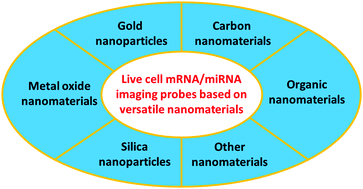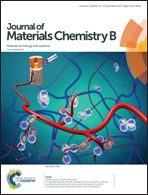Recent progress in live cell mRNA/microRNA imaging probes based on smart and versatile nanomaterials
Abstract
RNAs play important roles in various biological processes. Imaging of intracellular microRNAs (miRNAs) and messenger RNAs (mRNAs) not only helps us to better understand the formation and transcription of mRNAs, but also provides vital information for disease diagnosis and treatment. Recently, many efforts have been focused on the development of high-performance RNA imaging probes that directly monitor endogenous miRNAs and mRNAs inside living cells without special treatment. Such real-time and in situ monitoring of the intracellular RNA expression level offers dynamic distribution information of target RNA in living cells that promotes target mRNA/miRNA functional research. With the breakthrough in smart cell delivery techniques, efficient live cell RNA imaging probes greatly expand our knowledge of life processes and improve cancer detection accuracy. In this review, we summarize different classes of state-of-the-art live cell miRNA/mRNA optical imaging probes based on smart and versatile nanomaterials that have been reported in recent years. By featuring the designs and performance for the probes of interest, we compare advanced RNA imaging probes, provide guidance for better utilization of the existing imaging probes and suggest the design of future advanced live cell RNA imaging probes.



 Please wait while we load your content...
Please wait while we load your content...